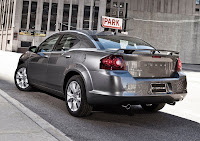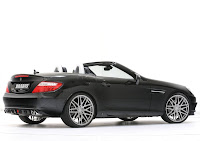- Bugatti Veyron Grand Sport Vitesse, 2012
Following the success of the Veyron 16.4 Super Sport, Bugatti did not have to wait long before it received the first inquiries about an open-top version of the Grand Sport that could also deliver 882 kW (1,200 hp). "We were instantly electrified by the idea of transferring the power of the Super Sport to the Grand Sport, which previously delivered a maximum of 1,001 hp, and thus taking the roadster to a new level," says Wolfgang Dürheimer. The President of Bugatti Automobiles S.A.S. continues: "Our team has managed to transfer the world's most powerful car engine to the open-top sports car while taking all vehicle dynamics and aerodynamic parameters into consideration. We are proud to present the fastest roadster ever at the 2012 Geneva Motor Show with the world premiere of the 1.200 hp Grand Sport Vitesse."
Dynamics in figures
The new Bugatti Veyron 16.4 Grand Sport Vitesse boasts a remarkable maximum torque of 1,500 Nm (at 3,000-5,000 rpm) from the 7.9-litre capacity of its W16 engine. The maximum output (1.200 hp) is reached at 6.400 rpm. These figures allow the car to reach 100 km/h (62 mph) from standing in unbelievable 2.6 seconds. The top speed of 410 km/h (255 mph) makes the four-wheel drive (like all Veyrons) Grand Sport Vitesse the fastest production roadster ever. The maximum speed is reached on closed tracks with special safety precautions. In "normal" handling mode, the Grand Sport Vitesse is electronically limited to 375 km/h (233 mph).
Optimized drive system
The 199 hp increase over the Grand Sport has been mainly achieved by using four larger turbochargers with new intercoolers. Furthermore, Bugatti has extensively reinforced all drivetrain components in order to safely transfer the immense forces at all times. The gearing of the seven-speed dual-clutch gearbox (DSG) in particular has been adapted to the new requirements. In this context, as on the Super Sport, Bugatti has also modified the air ducting in the area of the drivetrain. As a consequence of the larger turbochargers and the overall reduced back pressure, it was even possible to reduce the fuel consumption slightly despite the increased output. The fuel system, with a four-pump tank, has been taken from the Super Sport.
Chassis
In order to put the unrivalled power onto the road absolutely safely and masterfully, the engineers have reconfigured the chassis of the Vitesse. Thanks to the quick-responding dampers that have been adapted from motor racing, the control of the vehicle has been further improved and perfectly balanced. Body roll and pitching during hard acceleration and braking are now virtually imperceptible. Optimised wheel-load fluctuations have further reduced understeer and allow a maximum level of active safety. In addition to the incomparable lateral acceleration of up to 1.4 g, the precise interaction of the tires (on all-new, lighter 20-inch "Vitesse"-type alloy wheels), together with the intelligent all-wheeldrive system, ensures extremely good handling. The chassis, all-wheel-drive system and the revised ESP form a dynamic alliance: since the reconfigured ESP kicks in slightly later, for example when you accelerate out of corners, the Grand Sport Vitesse also provides a more dynamic performance in these situations. It goes without saying that Bugatti has adapted the brake-cooling system to account for the even higher engine output. The brakes, which are unparalleled in terms of stability and performance, now have additional and larger air intakes.
In general, it can be said that the Grand Sport Vitesse is even sportier than the 1,001 hp Grand Sport, but at the same time it has not been turned into a full-blown racing car. It therefore remains easy to master for the driver. In this context, it is simply astounding that Bugatti managed to increase comfort in the chassis area by reducing the dynamic natural frequency.
Body
Bugatti has developed a new roof spoiler for the Grand Sport Vitesse that significantly reduces wind noise and buffeting in the interior. Furthermore, there will be a new windbreak for the roadster that can be stored away compactly in the luggage compartment when not in use. Both details will also be available for the Grand Sport. Together, they allow extremely relaxed, open-top driving even at speeds of around 200 km/h (124 mph).
Numerous aerodynamic measures at the front and rear that appeared on the Super Sport have been adapted for the Grand Sport Vitesse. The front end is therefore characterized by larger air intakes; the two central air intakes to the left and right of the Bugatti radiator grille are divided horizontally by a bar. The bottom air vent stretches sideways into the wheel housing and gives this exceptional sports car an extremely masterful appearance. Immediately below this air intake, you will see a new, visually refined front spoiler that has been designed in a similar way to the splitters used in motor racing. The improved xenon headlights from the Super Sport, which are now framed in black, are also new. The rear end, which is also derived from the Super Sport, is characterised by a double diffusor and a centrally positioned twin tailpipe. A new Park Distance Control system (PDC) watches over the front and the rear.
The two air scoops on the left and right of the engine cover (redesigned for the Vitesse) are a characteristic of the Grand Sport and thus also of the Grand Sport Vitesse. These air scoops fulfil two tasks on the roadster. On the one hand, they pull in air for the engine, and on the other, they are an elegantly integrated part of the anti-roll protection system. As on the Super Sport, a full-carbon-fibre monocoque, which allows an extremely high torsional rigidity combined with maximum passive safety, is also used on the Grand Sport Vitesse. The outer skin is also made completely from carbon fibre and, consequently, the new Bugatti Veyron 16.4 Grand Sport Vitesse is available in clear-coated visible carbon.
Interior
Carbon fibre is (along with stainless metals such as Aluminium and Magnesium) also the dominant material in the interior of the Grand Sport Vitesse. Numerous interior parts are now made from carbon fibre in the 1,200 hp roadster. This includes the centre console extension, a cover with EB logo in the rear-bulkhead leather trim (between the seat backrests) and the belt outlet covers on the seats. The décor on the centre console, the door inserts and the adjoining trim on the instrument panel are also made from carbon fibre. The bicolor black trim parts are also new in the Grand Sport version, and so is a special seat design for the Grand Sport Vitesse. The two-tone leather seat covers are enhanced by contrasting stitching between the seat base and the side sections. Contrasting stitching is also featured on the leather armrest between the seats, which comes without the typical quilting. Also new: knee pads in the centre tunnel area, an additional 12 V socket (in the glove compartment), the restraint systems, the illuminated start and parking lock button (same as Super Sport), an instrument cluster with shift-up information and - as a matter of honour - the power gauge that now goes up to 1,200 hp!
Configuration of the show vehicles
There is no end to the individualisation options for the Bugatti. Each one of the 350 Veyrons built is therefore unique. This also applies to the two Grand Sport Vitesse models that Bugatti is exhibiting at the 2012 Geneva International Motor Show. The blue version of the new roadster is finished in visible carbon fibre. The upper area of the body is finished in "Blue Carbon" while the roof area and air scoops are "Lake Blue". The lower body panels (side skirting, front spoiler, radiator grill frame and rear apron with diffusor), the inner surfaces of the wheel rims and the underside of the automatically extending rear spoiler are in "Light Blue Sport", which has a hint of turquoise. The exterior colours are picked up again in the interior. While the large surfaces feature dark blue tones, "New Light Blue" is used for the contrasting stitching and the Vitesse labelling on the seats. This Vitesse version costs 1.91 million euros.
The second Grand Sport Vitesse is painted in dark "Jet Grey". Instead of two colours, this model uses an interaction between shiny areas (lids, roof and air scoop) and matte surfaces and elements (side parts, exterior mirrors and door handles). The radiator grill and wheel rims have been painted black. The orange underside of the rear wing matches the "Tangerine" colouring that Bugatti has used, for example, for the seats, the carpets, the underside of dashboard, the door edging, the contrasting stitching and the Vitesse labelling in the interior. All other surfaces, including the carbon parts, are black. In both cases, the aggressive, dynamic look of the vehicles fits in with the positioning of the new Grand Sport Vitesse. Its price is 1.75 million euros.
The classic Grand Sport, a sports car with an elegant, artistic orientation, will, of course, remain in the range. Following the success of the L'Or Blanc (created in cooperation with Berlin-based porcelain makers Königlichen Porzellan-Manufaktur), Bugatti is currently working on further unusual ways to individualize the Grand Sport. In Geneva, the world's most exclusive car manufacturer is presenting a version of the roadster in visible carbon fibre in a brownish finish for the first time. One challenge for the production is to give the visible carbon a transparent gleam while allowing the colour to radiate vibrantly in a certain light. On the Grand Sport presented in Geneva, the carbon parts made in the new colour "Brown" (lids, rear end, front spoiler and side skirting) shimmer in an almost bronze shade depending on how the light falls. To create a contrast, the side parts on this Grand Sport, right up to the rear air intakes, are made from polished aluminium. The interior of the sports car, with "Gaucho" coloured leather and dark stitching (colour "Coffee"), complements the exterior. It costs 1.79 million euros.






























